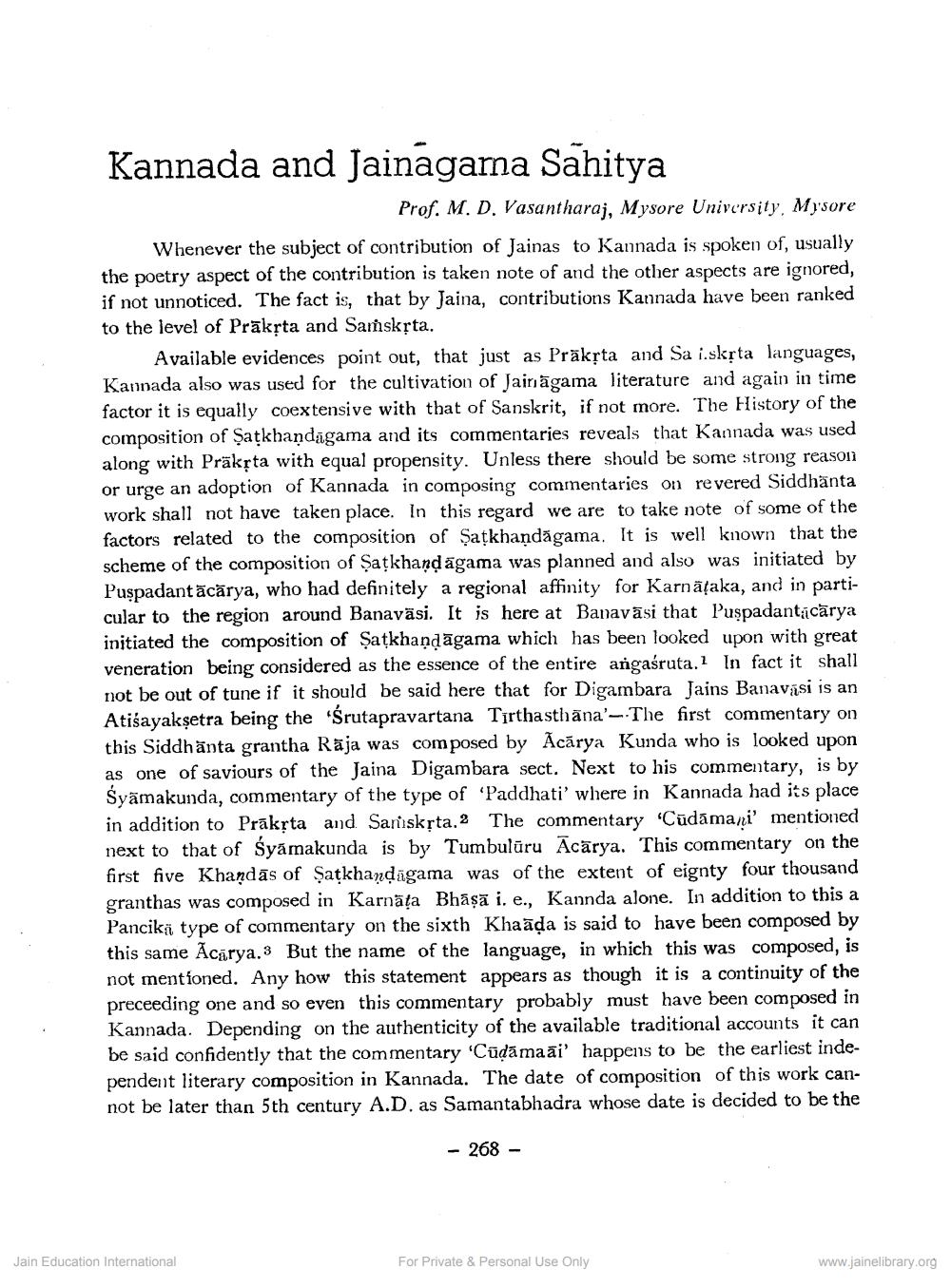Book Title: Kannada and Jainagam Sahitya Author(s): M D Vasantraj Publisher: Z_Kailashchandra_Shastri_Abhinandan_Granth_012048.pdf View full book textPage 1
________________ Kannada and Jainagara Sahitya Prof. M. D. Vasantharaj, Mysore University, Mysore Whenever the subject of contribution of Jainas to Kannada is spoken of, usually the poetry aspect of the contribution is taken note of and the other aspects are ignored, if not unnoticed. The fact is, that by Jaina, contributions Kannada have been ranked to the level of Prākta and Samisksta. Available evidences point out, that just as Präkịta and Sa i.skệta languages, Kannada also was used for the cultivation of Jaināgama literature and again in time factor it is equally coextensive with that of Sanskrit, if not more. The History of the composition of Satkhandagama and its commentaries reveals that Kannada was used along with Prākṣta with equal propensity. Unless there should be some strong reason or urge an adoption of Kannada in composing commentaries on revered Siddhänta work shall not have taken place. In this regard we are to take note of some of the factors related to the composition of Satkhandăgama. It is well known that the scheme of the composition of Şațkhandagama was planned and also was initiated by Puspadantācārya, who had definitely a regional affinity for Karnäļaka, and in particular to the region around Banavāsi. It is here at Banavāsi that Puspadantzīcārya initiated the composition of Şatkhaņdāgama which has been looked upon with great veneration being considered as the essence of the entire angaśruta. 1 In fact it shall not be out of tune if it should be said here that for Digambara Jains Banavāsi is an Atiśayakşetra being the "Śrutapravartana Tirthasthāna'-. The first commentary on this Siddhānta grantha Rāja was composed by Acārya Kunda who is looked upon as one of saviours of the Jaina Digambara sect. Next to his commentary, is by Syāmakunda, commentary of the type of 'Paddhati' where in Kannada had its place in addition to Prākṣta and Sanuskrta.2 The commentary "Cūdāmani' mentioned next to that of Syámakunda is by Tumbulāru Ācārya. This commentary on the first five Khandās of Satkhandagama was of the extent of eignty four thousand granthas was composed in Karnāļa Bhāṣā i. e., Kannda alone. In addition to this a Pancikä type of commentary on the sixth Khaāļa is said to have been composed by this same Acārya.3 But the name of the language, in which this was composed, is not mentioned. Any how this statement appears as though it is a continuity of the preceeding one and so even this commentary probably must have been composed in Kannada. Depending on the authenticity of the available traditional accounts it can be said confidently that the commentary 'Cūdāmaai' happens to be the earliest independent literary composition in Kannada. The date of composition of this work cannot be later than 5th century A.D. as Samantabhadra whose date is decided to be the - 268 - Jain Education International For Private & Personal Use Only www.jainelibrary.orgPage Navigation
1 2 3 4 5
